Hinode/EIS Nuggets – Archive
Welcome to the MSSL Hinode/EIS Nuggets Archive.
On this page you can find EIS nuggets on date order basis.
Switch Thumb
-

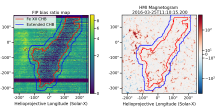
Alexandros Koukras (Columbia University)
Elemental Abundances at Coronal Hole Boundaries as a Means to Investigate Interchange Reconnection and the Solar Wind
…
-
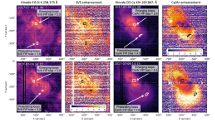
Teia Mihailescu (UCL/MSSL)
Intriguing Plasma Composition Pattern in a Solar Active
Region: a Result of Non-Resonant Alfven Waves?
…
-

Dave Long (DCU)
Identifying Plasma Fractionation Processes in the Chromosphere using IRIS
…
-
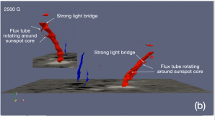
Deb Baker (UCL/MSSL)
Searching for evidence of subchromospheric magnetic reconnection on the Sun
…
-
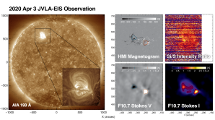
Dr. Andy To (UCL/MSSL)
Understanding the Relationship between Solar Coronal Abundances and F10.7 cm Radio Emission …
-
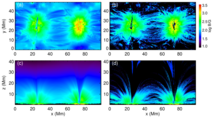
Yajie Chen, Hui Tian, Xianyu Liu (Peking University) and Wenxian Li, Xianyong Bai (National Astronomical Observatories, Chinese Academy of Sciences)
Forward Modeling of Solar and Stellar Coronal Magnetic-field Measurements Based on a Magnetic-field-induced Transition in Fe X …
-

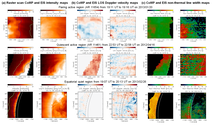
Jae-Ok Lee
Comparison of Off-limb Hinode/EIS and CoMP Doppler Velocities and Nonthermal Line Widths …
-

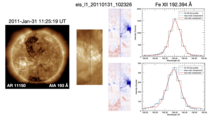
Steph Yardley
High velocity upflows in solar active regions…
-

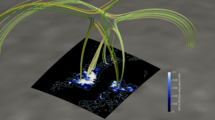
Teia Mihailescu
Upflows induced by magnetic reconnection above an erupting flux rope…
-

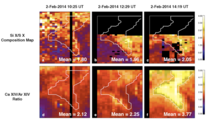
Andy To
The evolution of plasma composition during a solar flare…
-

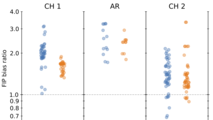
David Stansby
Comparing coronal and solar wind elemental fractionation…
-

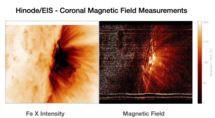
Enrico Landi
Hinode/EIS Measurements of Active Region Magnetic Fields…
-

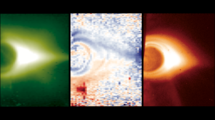
Ryan French
Dynamics of Late-Stage Reconnection in the 2017 September 10 Solar Flare…
-

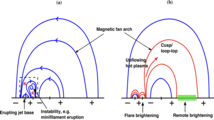
Kyoung-Sun Lee et al
A Solar Magnetic-fan Flaring Arch Heated by Nonthermal Particles and Hot Plasma from an X-Ray Jet Eruption…
-
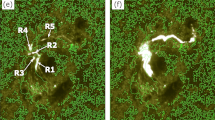
Yumia Bamba - Institute for Advanced Research/Nagoya Universityn
EIS observed indicators of push-mode magnetic reconnection…
-

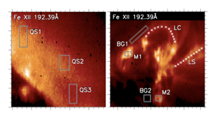
Juraj Lörinčík, Jaro Dudík, Guilio del Zanna, Elena Dzifčáková, Helen Mason
Quantifying the Departure from Maxwellian…
-

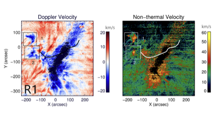
Allan Macneil
Active Region Modulation of Coronal Hole Solar Wind…
-

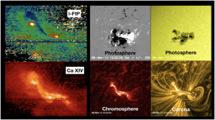
Deb Baker, Gherardo Valori, Marco Stangalini
Insight into how plasma is fractionated in the chromosphere…
-

Susanna Parenti
Spectroscopy of very hot pasma in non-flaring parts of a solar limb active region: spatial and temporal properties …
-
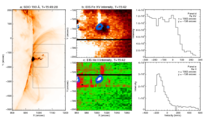
David Long
Plasma evolution within an erupting coronal cavity …
-
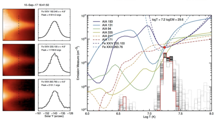
Harry Warren
Spectroscopic observations of current sheet formation and evolution in X8.3 flare …
-

Jeff Brosius
Explosive chromospheric evaporation and warm rain in a C3.1 flare …
-
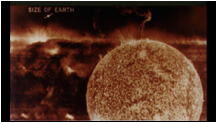
Louise Harra
See how to get Doppler velocities using EIS slot observations …
-

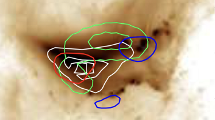
Eduard Kontar
Plasma turbulence and the standard solar flare model …
-

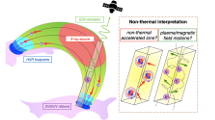
Natasha Jeffrey
Measuring solar flare non-Gaussian velocities using EIS spectroscopy …
-

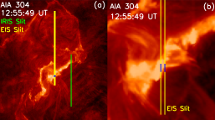
Jeffrey Brosius, Andrew Inglis, Adrian Daw
Quasi-Periodic Fluctuations and Chromospheric Evaporation in a Solar Flare …
-

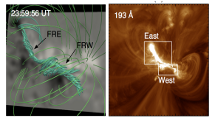
Petros Syntelis
Plasma diagnostics prior to CME eruptions …
-

The Hinode/EIS Team
Mercury transit observed by Hinode/EIS …
-
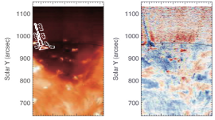
Kyoung-Sun Lee, David H. Brooks, Shinsuke Imada
Photospheric abundances of polar jets on the Sun observed by Hinode …
-
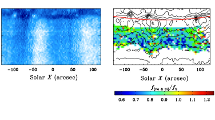
C. Guennou, M. Hahn, D. Davin
Relative abundances in plumes and interplumes …
-
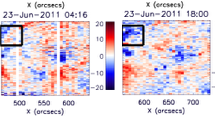
David Shelton, Louise Harra, Lucie Green
Atmospheric Response of an Active Region to new Small Flux Emergence …
-
-
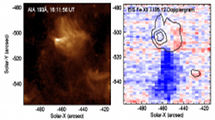
Peter Young
The discovery of dark jets in the solar atmosphere …
-
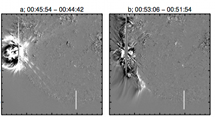
Dave Long
Estimating the energy of a global 'EIT wave' …
-
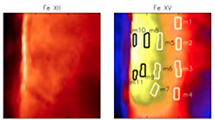
Srividya Subramanian
Emission measure distribution for diffuse regions in solar active regions.…
-
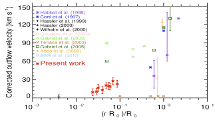
Hui Fu, Lidong Xia, Bo Li, Zhenghua Huang, Fangran Jiao and Chaozhou MouLen
Measurement of outflow velocities in on-disk plumes from EIS/Hinode observations.…
-

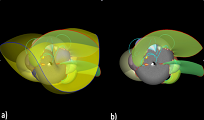
Len Culhane
Tracking Solar Active Region Outflow Plasma from its Source to the near-Earth Environment.…
-
-

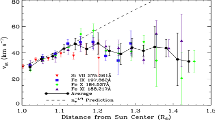
Michael Hahn and Daniel Wolf Savin
Evidence that Waves Heat Coronal Holes.…
-
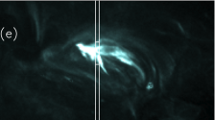
Jeff Brosius
Rapid Evolution of the Solar Atmosphere During a Microflare Observed with EIS:
Hints of Chromospheric Magnetic Reconnection…
-
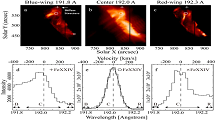
Imada S., Aoki K., Hara H., Watanabe T., Harra L. K., and Shimizu T.
Clear Evidence for Hot Fast Flow above a Solar Flare Arcade…
-
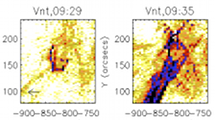
Louise Harra, Sarah Matthews, J. L. Culhane, Mark Cheung, E. Kontar, Hiro Hara
Location of non-thermal velocity in the early phases of a large flare - revealing the pre-eruption flux rope? .....…
-
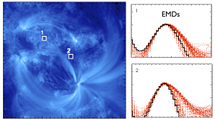
(by J.T. Schmelz and S. Pathak (University of Memphis)
The Cold Shoulder: Emission Measure Distributions of Active Region Cores .....…
-
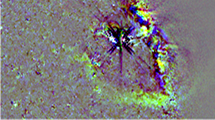
(by David Long (UCL/MSSL), David Williams (UCL/MSSL), Stéphane Régnier (UCLan), Louise Harra (UCL/MSSL)
Using EIS to measure the coronal magnetic field.....…
-
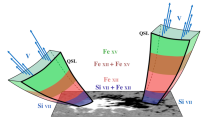
(by Pascal Démoulin (Observatoire de Paris, LESIA), Deb Baker (UCL/MSSL), Lidia van Driel-Gesztelyi (UCL/MSSL), and Cristina Mandrini (IAFE)
What can we deduce from the 3D geometry of AR upflows?.....…
-
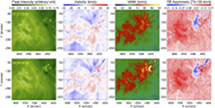
(by Hui Tian (Harvard-Smithsonian Center for Astrophysics)
Solar mass eruptions such as CMEs and EUV jets have rarely been investigated with spectroscopic observations.....…
-
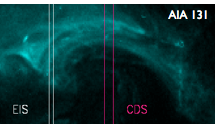
(by Jeff Brosius (Catholic University of America/NASA Goddard Space Flight Center)
Episodic Chromospheric Evaporation in Flare Loop Strands Observed with EIS.....…
-
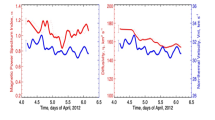
(by Louise Harra (UCL/MSSL) and Valentyna Abramenko (BBSO/NJIT))
Non-thermal response of the corona to the magnetic flux dispersal in the photosphere of a decaying active region.....…
-

(by Lidia van Driel-Gesztelyi, Deb Baker, and Lucie Green (UCL/MSSL) )
Plasma outflows from active regions: are they sources of the slow solar wind?…
-

(by by Dave Williams and Lucie Green, MSSL)
Venus Transit 2012…
-
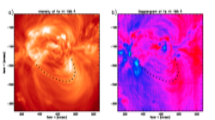
(by Costis Gontikakis,Research Center for Astronomy and Applied Mathematics, Academy of Athens)
How to compute active region loop inclinations, using the Doppler shifts measured along their length.....…
-
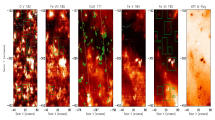
Blinkers: what is their true nature?
(by Srividya Subramanian, Armagh Observatory)
The aim of the present study is to identify the true nature of the
transient EUV brightenings, called blinkers…
-
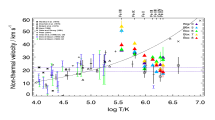
How line widths depend on temperature as well as location
(by David Williams, UCL- Mullard Space Science Laboratory)
One of the interesting things we're able to do with EIS is to examine line profiles in the corona.…
-
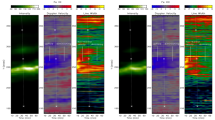
Interaction beteen EIT wave and upflow region
(by Feng Chen, School of Astronomy and Space Science, Nanjing University)
EIT waves appear as propagating diffuse bright fronts in the difference EUV images. It is believed that they are strongly related to coronal mass ejections (CMEs).…
-
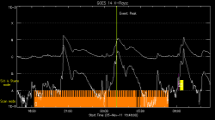
The EIS flare catalogue 1 year anniversary
(by Jian Sun, Lucie Green and Deb Baker, UCL-MSSL )
The current solar cycle, cycle 24, was slow to start but in 2011 a rapid rise in the sunspot number occurred which brought about more solar activity. To facilate finding solar flares that have been observed by the partial-Sun EIS observations, an EIS flare catalogue was established in February 2011 …
-
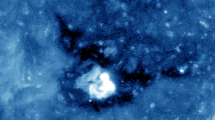
Spectroscopic Precursor to a CME
(by Deb Baker, Lidia van Driel-Gesztelyi and Lucie Green, UCL-MSSL)
Coronal mass ejections are eruptions of plasma and magnetic field from low in the Sun's atmosphere. They act as a valve to release magnetic energy from the Sun's atmosphere and are the major driver of space weather events. Theoretical and observational developments …
-
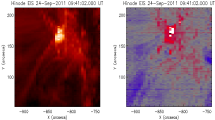
EIS observations of an X-class flare
(by Lucie Green and Deb Baker, UCL-MSSL)
2011 saw a dramatic upturn in the sunspot number with a corresponding increase in solar flare activity. This included the first X-class flare of the current solar cycle (cycle 24) which occurred on 15 February 2011. As of the time of writing, a total of eight X-class flares …
-
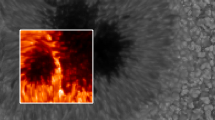
Sunspot light-bridges - a bridge from the photosphere to the corona?
(by Sarah A. Matthews, UCL-MSSL)
Light-bridges are bright lanes of material that divide the umbra. They are often observed during the break-up of sunspots and therefore can represent the re-establishment of convection. Their increased brightness suggests a higher temperature …
-
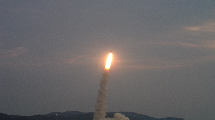
Five years of EIS observations
(by Lucie Green, MSSL)
This month's nugget celebrates five years of observations with the Extreme Ultraviolet Spectrometer (EIS) onboard Hinode. On October 28th 2006, EIS made its first observations of the solar corona, marking the start of a new era in solar spectroscopy. …
-
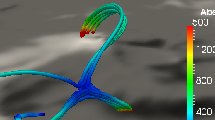
NLFFF extrapolation of an emerging active region
(by G. Valori, LESIA-Observatoire de Paris)
Nonlinear force-free field (NLFFF) extrapolation was used to investigate the structure of the field at the time of the main emergence. Here, the extrapolation is based on an SOT/SP vector magnetogram obtained from the scan on 4 July 11:58-12:34 UT. …
-
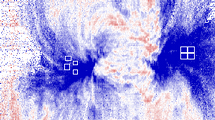
Evidence of a Connection Between Active Region Outflows and the Solar Wind
(by David H. Brooks, George Mason University and Harry P. Warren, Naval Research Laboratory)
Hinode has revealed the presence of high temperature (few MK) outflows at the edges of many active regions. These outflows show velocities of tens of km/s and appear to persist for at least several days …
-
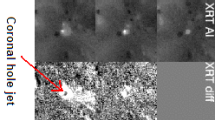
Temporal evolution of microflares in bright points
(by Suguru Kamio, MPS)
Recent observations by Hinode during the solar activity minimum revealed that quiet regions and coronal holes are not really quiet. X-ray bright points are found all over the Sun …
-
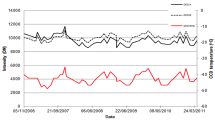
Contamination levels of EIS (as measured by QCM and LED flat-field intensity levels)
(by Louisa Bradley, MSSL)
As reported in a previous EIS nugget (Sensitivity Performance of the Extreme-ultraviolet Imaging Spectrometer (EIS) on Hinode, January 2011) the sensitivity loss …
-
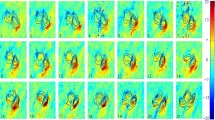
Hinode observations and 3D magnetic structure of an X-ray bright point
(by C. E. Alexander - University of Central Lancashire, UK, G. Del Zanna - University of Cambridge, UK, and R. C. Maclean - formerly of St Andrews University, UK)
X-ray bright points (hereafter XBPs) are composed of small compact loops and are an ideal target to study with current instrumentation due to their compact size …
-
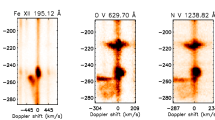
Large X-ray jet simultaneously observed by SUMER, EIS, XRT, and EUVI Ahead and Behind
(by Maria S. Madjarska, Armagh Observatory, N. Ireland)
The Hinode and STEREO satellites are now revealing, in unprecedented detail, one of the phenomena hidden from our view since the loss of the Yohkoh satellite: EUV/X-ray jets or jet-like events from coronal bright points …
-
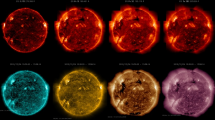
Full Sun monochromatic images
(by Ignacio Ugarte-Urra, George Mason University & Harry Warren, Naval Research Laboratory)
While X-ray and EUV imagers take images at a cadence close to the characteristic evolutionary timescales of solar phenomena,
narrow slit spectroscopy is better suited for many plasma diagnostics …
-
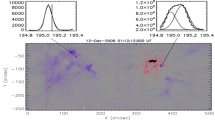
Determining the source of a magnetic cloud using a velocity difference method
(by Louise Harra, UCL-Mullard Space Science Laboratory)
For large eruptions on the Sun, it is often a problem that the core dimming region cannot be observed due to the bright emission from the flare itself. However, spectroscopic data can provide the missing information through the measurement of Doppler velocities …
-
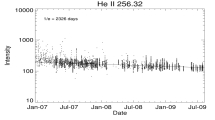
Sensitivity performance of the Extreme-ultraviolet Imaging Spectrometer (EIS) on Hinode
(by George Doschek, NRL SSD Code 7670)
Scientists in the Space Science Division (SSD) of the Naval Research Laboratory have been studying the sensitivity of the Extreme-ultraviolet Imaging Spectrometer (EIS) on the Japanese Hinode spacecraft …
-
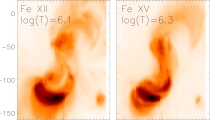
EIS observations of a sigmoidal active region
(by Lucie Green, UCL-Mullard Space Science Laboratory)
Some active regions display a forward or reverse S structure when observed in soft X-ray or EUV emission. These regions are monitored for eruptive activity as they have a high likelihood of producing a coronal mass ejection …
-
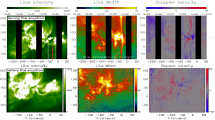
Spectroscopic analysis of an EIT wave/dimming observed by Hinode/EIS
(by Feng Chen, Department of Astronomy, Nanjing University)
EUV waves were first observed by the EIT telescope onboard the SOHO satellite. They are best seen in the running difference images as bright fronts followed by an expanding dimming region, which is believed to be strongly related to coronal mass ejections (CMEs) …
-
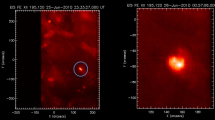
EIS target practice: testing our Bright Point Trigger
(by Peter Young, George Mason University)
Usually when we observe a feature on the Sun with EIS, we need to decide 1-3 days in advance what we want to look at. It takes this long because the three Hinode instrument teams need to agree on what to observe …
-
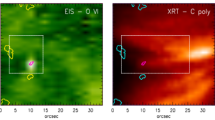
Multi-wavelength observations of small-scale reconnection events triggered by magnetic flux emergence
(by Salvo Guglielmino, Universitá di Catania; prepared by: Santiago Vargas Domínguez, MSSL)
The interaction between emerging magnetic flux and pre-existing ambient field has become a "hot" topic for both numerical simulations and high-resolution observations …
-
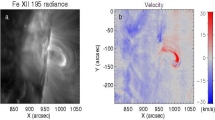
Preparing EIS data using neural networks
(by Suguru Kamio, Max Planck Institute for Solar System Research)
The Sun is the only star whose fine structure can be observed from the Earth. Resolving the structure and dynamics of the solar corona is crucial for understanding energy release processes such as flares. Due to this, the resolution of solar telescopes …
-
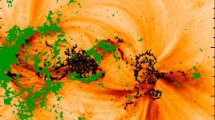
Response of the corona to the emergence of "serpentine" magnetic field
(by Louise Harra, UCL-Mullard Space Science Laboratory)
New flux emergence into a pre-existing active region clearly can have dramatic consequences, often producing flaring with hours of the flux appearing. The high resolution of the SOT data also shows the complexity of the flux as it emerges with the complex and small-scale positive/ negative (white/black) features appearing …
-
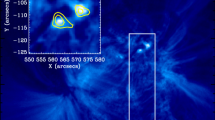
Velocity Characteristics of Evaporated Plasma
(by Ryan Milligan, GSFC)
Chromospheric evaporation is largely accepted to be the process by which solar flares achieve their high temperatures and densities. The standard flare model states that electrons are accelerated at or near a magnetic reconnection site in the corona and then travel along newly reconnected magnetic field lines toward the chromosphere …
-
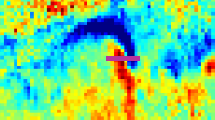
EIS observations of pre-flare activity
(by Alison Wallace, UCL-Mullard Space Science Laboratory)
In this nugget we look at NOAA active region 10955 which emerged in the southern hemisphere on 6th May 2007 and showed some interesting flows before a GOES B-class flare …
-
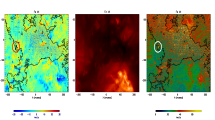
Interchange reconnection along a coronal hole boundary?
(by Deb baker, UCL-Mullard Space Science Laboratory)
Coronal hole (CH) boundaries are the interface between a CH, where the field is dominantly "open" to interplanetary space, and the surrounding corona where the magnetic field is mainly closed. While CHs are long established to be a source of the fast solar wind …
-
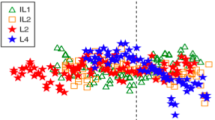
The Weird and Wonderful World of Widths
(by David Williams, UCL-Mullard Space Science Laboratory)
EIS was designed as a spectrometer that would have good enough spectral resolution to be able to look at the detail of emission line profiles, and one of these details is the spectral line width …
-
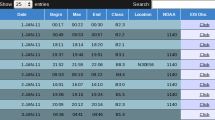
Find a flare observed with Hinode EIS
(by Jian Sun and Louise Harra, UCL-Mullard Space Science Laboratory)
The EIS flare catalogue was created and is maintained by the EIS team at the Mullard Space Science Laboratory (MSSL). We realize that finding flare events with spectroscopic data is more challenging than simple imaging data … (watch Demo Movie)
Last Revised: 22-July-2011
Feedback and comments: webmaster
|


